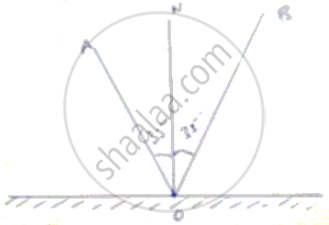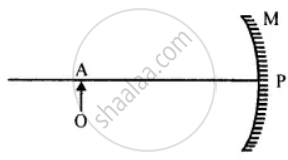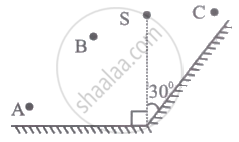Advertisements
Advertisements
प्रश्न
उत्तर
Angle of reflection to the normal = angle of incidence to the normal = 20°
So the angle between incident ray and reflected ray = Angle of incidence + Angle of reflection = 20 + 20 = 40°

APPEARS IN
संबंधित प्रश्न
Suppose you are in a dark room. Can you see objects in the room? Can you see objects outside the room? Explain.
Why do automobile drivers prefer convex mirror as a rear vew mirror? Illustrate your answer.
Give two uses of concave mirror.
In the figure is shown a concave mirror. A is a point on the principal axis. If an object O is kept at A, image is formed on A itself. Copy the diagram. Draw the image in the diagram. Is the image real or virtual?

Measure the distance PA and write it in the diagram. What is the distance PA called?
Mark a point B on the principal axis, at which, if a point source of light is kept, the rays travel parallel to principal axis after reflection from M. What is point B called?
Identify the following kind of beam of light.

An object that blocks all of the light from passing through is ______.
______ through which light can pass completely.
The angle of incidence is equal to the angle of reflection for perfect reflection.
A point source of light S is placed in front of two large mirrors as shown. Which of the following observers will see only one image of S?

